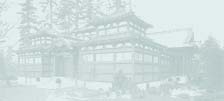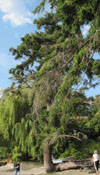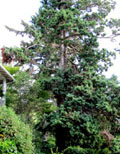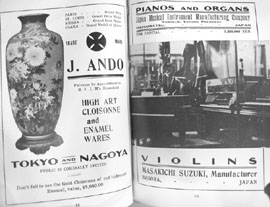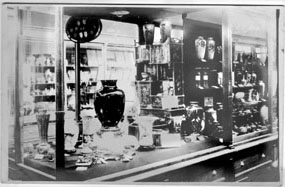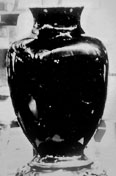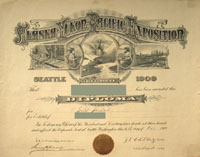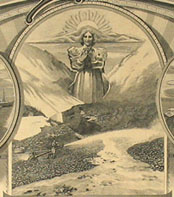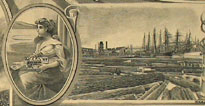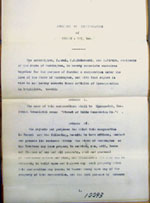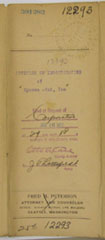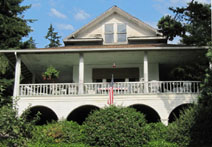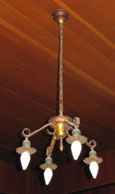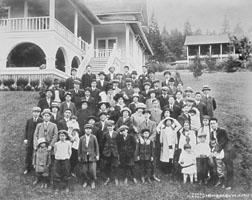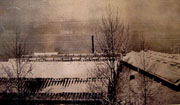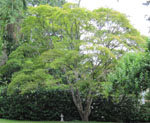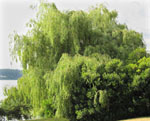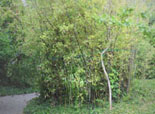This page is an annex. Most articles on Japanese-Americans and the AYPE will
The Japan Day Committee
Arai, Tatsuya 荒井達弥 {b} (official AYPE vendor for the Formosa Tea Parlour and the "Streets of Tokio")
Kushibiki, Y. (official AYPE vendor for the Nikko Café and the “Destruction of Frisco”)
Okada, Sumizo. 崗田澄藏 (owner, Oriental Laundry and other businesses, Seattle)
Ota, Hajime, Chair (Imperial Japanese Commissioner-General to the Fair)
Takahashi, Charles Tetsuo 高橋徹夫 {a b} (labor contractor; Vice President, Oriental Trading Co., Seattle)
Takesawa, H. H. (president, Oriental Trading Co. and Oriental Bank, Seattle)
Tanaka, Tokichi 田中都吉 {a b} Vice Chairman (Japanese consul general in Seattle)
Persons possibly involved with the committee
Hayashi, Hisajiro {a b} (Japanese vice consul in Seattle)
Oksaka, H. H. (according to Seattle Post-Intelligencer, a vice chairman)
Honorary American committee for Japan Day
Judge Thomas Burke, J. D. Lawrence, M. F. Barkus, C. W. Treat, and E. F. Palm (sp/?).
Other Washington-based Japanese involved with Japan Day events but not on the planning committee
Fujosama, T. T. (railroad contractor in Seattle, dressed in Samurai armor for parade on Japan Day)
Furuya, Masajiro 古屋政次郎 {a b} (importer, wholesaler, labor contractor, Seattle Chamber of Commerce and
Seattle Commercial Club, owner of estate on Bainbridge Island)
Hirade, Kuranosuke 平出倉之助.{a} (V-P, Oriental-American Bank, wholesaler, retailer, Seattle Chamber of
Commerce)
Ito, Tokugoro (Martial arts expert -- "wrestler" -- who performed in several matches at or coinciding with AYPE
events)
Kumamoto, Kiyoshi 隈元请 (dentist; owner and editor of the North American Times)
Matsura, Frank (Sakae) 松浦 栄 (1873-1913) Some of his photographs of Okanogan County were exhibited at
the AYPE)
Okamura, Harry 岡村 (owner, Eagle Laundry, the largest non-European laundry in Seattle)
Setsuda, Kiichi (juror for international exhibit; he awarded a number of the exposition prizes)
Sutakawa, S. (rice mill owner, secretary of Seattle’s only Japanese commission business)
Washington-based Japanese who could not participate
Tsukuno, Matajiro (Wealthy Seattle merchant and ardent AYPE supporter, killed in 1907 by a Great Northern
switch engive while carrying bon voyage flowers for Thomas Burke and M. F. Backus who were leaving on the
steamship Minnesota to promote the AYPE in Japan and China)
{a} = attended the Rainier Club banquet for the Japanese commissioners on Sept 3
{b} = sat in the VIP box on Japanese Navy Day at the AYPE, June 4
[the above information comes from articles in the Seattle Times, the Seatle Post-Intelligencer, and the Seattle Star; the kanji versions of
names from Kazuo Ito, Issei, 1973; and the Tsukuno information from the International Examiner 8/17-9/7/2005]
Ando, Suzuki, and Yamaha show products that still are famous after 100 years
安藤, 鈴木, 雅马哈: 日本百年老字号
While Yamaha and Suzuki would eventually start making things other than pianos and violins (for instance, motorcycles and automobiles), J. Ando & Co.安藤七寳店 has stayed with its original products down to the present day -- cloisonne enamel wares, made by firing colored glass onto a metal body, with each colored area surrounded by a wire dam or "cloison" that keeps the glass colors from running together when heated to the melting point.
Ando cloisonne vases, plates, etc., are still being made; early examples fetch ever-higher prices on Ebay and at antique shows (http://www.ando-shippo.co.jp/).
By a lucky chance, we have not only an advertisement for Ando's wares in the official pamphlet for the Japanese exhibit at the AYP Exposition but also a photograph of an exhibit case showing Ando cloisonnes in the building that housed the Japan exhibits.
The photograph, from a direct-photo postcard owned by Dan Kerlee (www.aype.com), may be the only one still in existence. It shows that many of Ando's premier products, then as now, were baluster-shaped vases like the one in the advertisement. A good many were sold during the course of the AYPE. Readers who own such vases can
recognize Ando wares by looking for the Ando mark ( ) on the base. If they bought the vase as an antique in the
Seattle area, it may well have come from the AYPE.
...
Valuable Japanese Vase the Most Pretentious of Many Gifts Accepted
…an enormous red and gold enameled cloisonne vase, a masterpiece of Japanese art… The vase was the most valuable of the gifts accepted by the president. A beautifully leather-bound petition from Baron K. Ohara, minister of agriculture and commerce, presented by H. Ota, director general of the Japanese exhibit at the exposition, besought him to accept it. It had been one of the features of the Japanese exhibit and is valued at $5,000. The vase is 26 inches high and the masterpiece of J. Ando, who spent eight years in making it.
The petition was presented to the president as he came down the stairs in the New York building just before the luncheon. Addressing his remarks to H. Ota and a delegation of Japanese from the Seattle Japanese Association, the president accepted the gift and said that it would be given a prominent place in the White House in Washington.
President Taft accepts a "pretentious" cloisonne vase from Japan
美国总统受大礼 - 日本安藤景泰兰花瓶
The following is quoted from an article in the Seattle Post-Intelligencer, 1909-10-01
The vase had been the centerpiece of Ando's exhibit in the Japanese Building. The advertisement shown above exhorts readers "Don't fail to see the gold cloisonne of red iridescent enamel, value $5,000."
The tone of the PI article may be slightly disapproving. Taft had been offered many gifts during his tour of the AYPE and accepted (and kept) most of them, including a large garnet and one or more gold nuggets. The Ando vase was worth the most money, however, and it did not help that it was clearly being presented by a foreign government rather than a locally based group like the Seattle Japanese Association. $5,000 would have been a meaningful good-will gift. In 1909, it was ten times the annual salary of an average American schoolteacher.
As noted elsewhere in this website, the Japanese Association had given him a copper-alloy vase at the AYP Exposition, while the Seattle Chinese communuty had given him a pair of needlework portraits of himself and Mrs. Taft, stitched by under-twelve children in southern China. Although both of these gifts may have been appreciated by the President, neither came close to the Ando vase in value.
The largest cloisonne (or plain enamel) vase in the Ando exhibit pictured above. It may be the one given to Taft.
J. Ando cloisonne exhibit, AYPE
J. Ando, T. Yamaha and M. Suzuki ads in AYPE pamphlet
The AYPE gives a Japanese company an environmentally incorrect award
A member of the family that founded the company sent this to us. The company had already won awards at several other world fairs by the time it showed its products at the AYP Exposition. Not many of those other awards can have come with certificates whose engraved imagives spoke so plainly about the purposes of the fair.
The images below are from the center of the certificate. They illustrate the commercial themes of the exposition as well as the three ladies who symbolize Alaska, the Northwest, and the Pacific. In this version, the Alaska lady -- the blonde holding the outsize gold nugget and rising from a hole in the valley floor -- is less inspiring than terrifying. If we were the hydraulic monitor operators in the foreground, we would be running for our lives.
Outlawed by California in 1884, mining with high-pressure monitors and hoses continued to be legal in other western states until after WW II, and is still practiced in Southeast Asia. It is an effective but environmentally destructive method for recovering heavy metal ores from sand and gravel deposits and even from solid rock.
In the East, allegorical ladies of the early 20th century tended to be scantily clad but here in the Northwest they were decently covered. The Japanese lady on the left holds a transpacific passenger-freight liner, not a fishing boat. The other two hold a locomotive and a nugget. The sawmill scene may represent Port Blakeley on Bainbridge Island, across Puget Sound from Seattle
In spite of a long-standing rivalry, Masajiro Furuya joined with C. T. Takahashi and Tetsuya Arai to support the creation of a Japanese Village, the so-called Streets of Tokio, on the Pay Streak of the AYP Exposition. Arai had bid successfully for the Japanese Village concession but needed financial support. While stylish and able to work smoothly within the American system, he had less money than Furuya and Takahashi. Moreover, as leaders of the American Japanese community in Washington State, all three were concerned to see that the Village would do well in the eyes of the white majority and of officials back in Japan.
Their solution was an ad hoc corporation, the Kyosan-Kai. The three principals, designated as the trustees of the corporation, signed the necessary documents on January 16 1909. Although work must have already begun on the buildings of the Village, the corporation would provide the legal and financial foundation for the buildings, furnishings, and management.
Rival businessmen unite to build the Streets of Tokio
The Kyosan-Kai was to have $25,000 in capital, divided into 2500 shares, each with a par value of $10. This was inexpensive enough for many members of the Japanese community to buy a share or two. We assume that a number of them did, although either Furuya or Takahashi could have provided the whole $25,000 without undue strain on their own finances. After the Fair the Streets of Tokio turned out to have made a small profit. We do not know whether the investors were repaid.
The above images are from the files of the Washington State Archives, Puget Sound Branch, in Bellevue, incorporation file #12293
Original state record envelope
First page of incorporation document, Kyosan-Kan Inc.
People at Japan Day: The first generation of Japanese-American leaders 日本庆祝日行列
The Furuya House: the best-preserved early Asian-American residence in the Pacific Northwest
In 1905 Masajiro Furuya, a merchant and banker who later became a key supporter of Japanese-American efforts at the AYPE, built a summer home for himself in the Crystal Springs area of Bainbridge Island, across Puget Sound from Seattle. Astonishingly, the home still exists. With the original exterior and interior still intact, it is probably the best-preserved early single-family home built by an Asian-American anywhere in the Pacific Northwest.
The dominant feature of the building is the massive verandah that surrounds it on three sides, overlooking Port Orchard Bay and the lawn that slopes down to the waterside. Without the verandah and the sheltered space underneath, the house would be quite small, especially because the second floor has never been finished or used. Furuya, a devout Christian, lived very modestly back in Seattle. Apparently he chose to live the same way on Bainbridge Island.
Even though Bainbridge Island was the home of two massive sawmill operations at its northern and southern end, other parts of its seacoast were already being colonized by wealthy Seattlites who, like their counterparts in most other American cities, felt a need for elaborate summer homes, often called lodges or cabins but very luxurious in spite of that. Furuya, as wealthy as many upper class Seattlites, evidently wanted to fit in. His problem, one imagines, was that his tastes ran to a simple and even ascetic lifestyle. His answer seems to have been to treat his summer house differently. He did use it as a part-time home for himself, his wife, and his two daughters. However, it had other important functions: as a gathering place for selected employees and other members of Seattle's Japanese American community, and as a private agricultural experiment station (see below).
Due to the bankruptcy of his businesses, Furuya was obliged to sell the house and land in 1931-32. It is now owned by Frank and Michele Whitman, who maintain it with exemplary care and with full consciousness of its historical importance to Japanese- and other Asian-Americans.
For the best photos of Furuya published thus far, see below and click here
As was common in upper-class resort buildings of the time, the Furuya house was built entirely of wood inside and out. There is no plaster or wallpaper inside -- the walls and ceiling are lined with closely fitted straight-grained Douglas fir boards, said to be from the nearby sawmill at Port Blakely where Furuya had once sought and been denied a job. Not only do the boards still have their original brown-stained finish but much of the hardware too is original: door fittings, window glass, and chandeliers.
Furuya house from west
Furuya House: dark-stained fir board walls
Furuya House: fir board ceiling with chandelier
Furuya House 1915: Outing for Seattle Japanese, probably Furuya employees.
(credit: Shea Aoki collection)
Furuya House, 1910-1920. Steam-heated hothouses and greenhouse on hill above the residence.
(credit: Whitman collection)
(long-blooming), snowball viburnum, sweet william, trumpet vine, and wisteria. However, most of these were introduced by Westerners who went to China or Japan and brought them back. Flowers and trees that were personally introduced by Asians are much rarer, and in almost no case do we still possess the original plant specimens that were thus intrioduced.
This lends particular importance to the trees still growing around the Furuya House on Bainbridge Island. Furuya was an ambitious plant importer, who experimented with numerous Japanese varieties that he hoped might do well in the Northwest. His experimentation with bamboos, under the supervision of "T. Tujiwara" [Fujiwara?], received a good deal of publicity at the time [note 1]. Furuya even seems to have toyed with the idea of introducing large-diameter timber bamboo. According to contemporary newspapers, he also introduced udo (Aralia cordata) and types of soybeans suited for making soy sauce [note 2].
What interests us here is the fact that many species of trees were imported by Furuya and that large trees of some of those species are still growing on the grounds of the former Furuya estate. Visitors may still see them, although sadly, a pair of paulownias had to be taken down several years ago. Such visitors will undoubtedly join the editors in admiring what are probably the oldest surviving individual plants in the Northwest to have been imported or tended by a person of Asian birth.
The editors are inwedbted to their friends, Michele and Frank Whitman, for allowing them to take these photographs. The Furuya
picture is from Washington State Magazine, 1906 (May), p 193
Note 1. "Bamboo Grown in Washington" Galveston (TX) Daily News, 1905-07-29, p12; Lima (OH) Times-Sentinel 1905-11-28
Note 2. "Great Forests of Bamboo" Oakland (CA) Tribune 1909-11-19, p24
Furuya's trees: the oldest living Asian-American plants in the Pacific Northwest
Imported and naturalized East Asian plants have been staples of North American and European gardens for centuries. They include major varieties of azalea, begonia, bleeding heart, camellia, catalpa, cherry, Chinese aster, crabapple, crysanthemum, crepe myrtle, day lily, fairy primrose, hibiscus, hollyhock, honeysuckle, hydrangea, iris, jasmine, lilac, lily, magnolia, mallow, maple, peony (tree and herbaceous), rose
Japanese maple
Apples
Willow
Japanese cypress
Black-stemmed bamboo
Cryptomeria
Japanese cypress
Furuya
More Paranoia: The Alleged Japanese "Tea Plantation" on the Strait of Juan de Fuca
The same kind of thinking that led Homer Lea at the time of the AYPE to publish his detailed plan for a future Japanese attack on Seattle also led the Seattle Times in 1908 to publish a front-page article on the threat posed by a plan to set up a Japanese agricultural "colony" in Clallam County near the mouth of the Strait, ostensibly devoted to the raising of tea but perhaps in reality, according to the Times, aimed at facilitating an attack on Seattle and the nearby naval base at Bremerton. According to the article:
 | ||||
"In speaking of the comparative security with which an organized colony can work against the peace of the country, a former army officer now residing at Port Townsend, within sight of Forts Worden, Flagler and Casey, has made the following statement:
"It was recently pointed out that the defenseless condition of the [Puget] Sound below Point Wilson really renders the big forts near Port Townsend ineffective, for the reason that a landing party at Dungeness [25 km or 15 mi to the west, nearer the Pacific] can come overland and, by a rear attack, take Fort Worden. Once in possession of that formidable defensive work, they can speedily silence the guns of Forts Casey and Flagler, thus providing free access to Puget Sound for an invading fleet.
"The presence of a large colony of Japanese on the shores of the Strait, many milies nearer the ocean, cannot, as a consequence, be looked upon in the light of anything but a serious menace to the safety of this great inland sea, in event of invasion at the hands of the Japanese. With a colony of 1000 or more of these men, all of whom are finished soldiers, already on the land, a material advantage is afforded a landing party, for there is no doubt that many of the so-called "tea farmers" are provided with modern rifles and ammunition." Seattle Times Feb 4, 1908, p 1
The idea that most male Japanese laborers in North America were highly trained ex-soldiers, veterans of either the Sino-Japanese war of 1895 or the Russo-Japanese War of 1904, was common in contemporary anti-Japanese propaganda. While it seems unlikely that the Japanese government would actually have let so many of its experienced troops leave Japan, paranoid white Americans believed that this was so. The belief must have played a role in discouraging violence against Japanese immirgants.
We do not know whether the Japanese actually tried to grow tea on the hillsides overlooking the Strait, or whether this is even possible. If any of our readers know about Juan de Fuca tea, we hope they will get in touch with us, the editors.
版权 Copyright is free for non-profit use: : click here for more information
